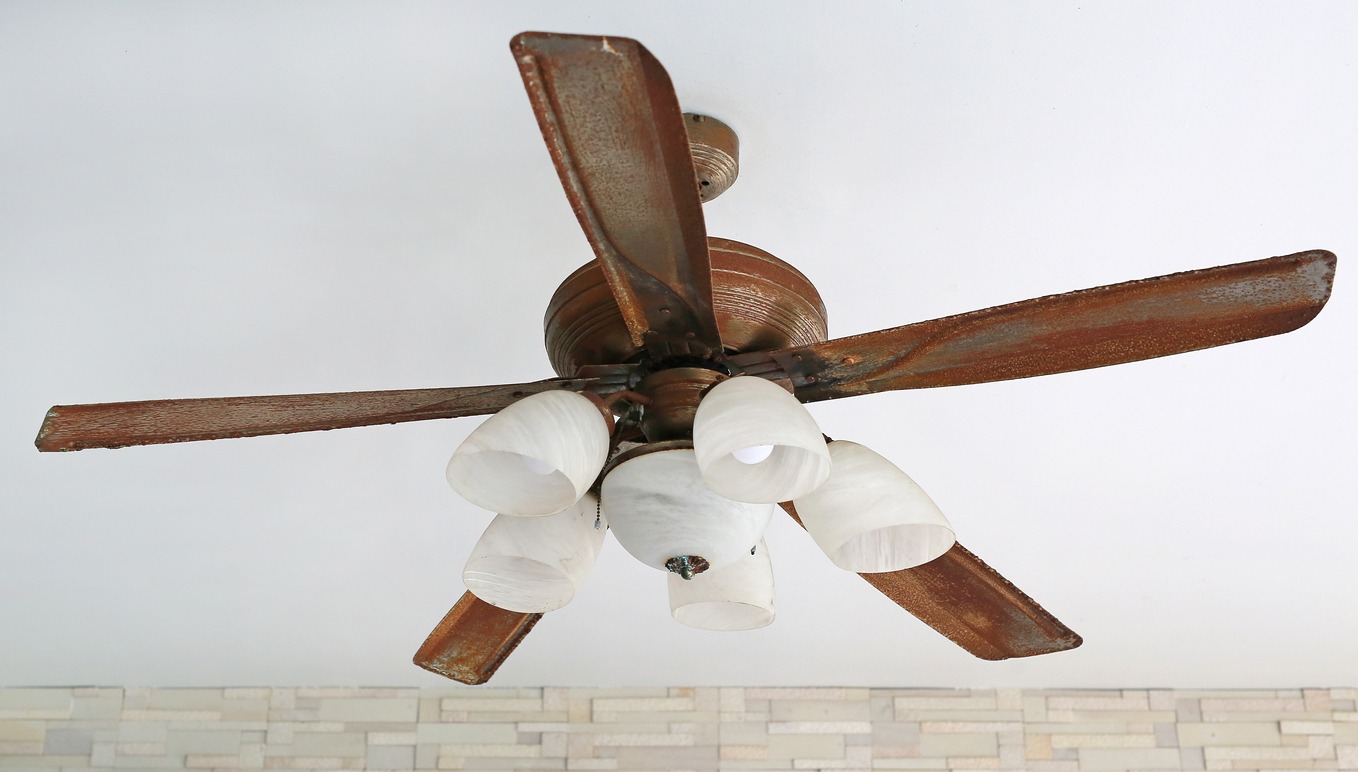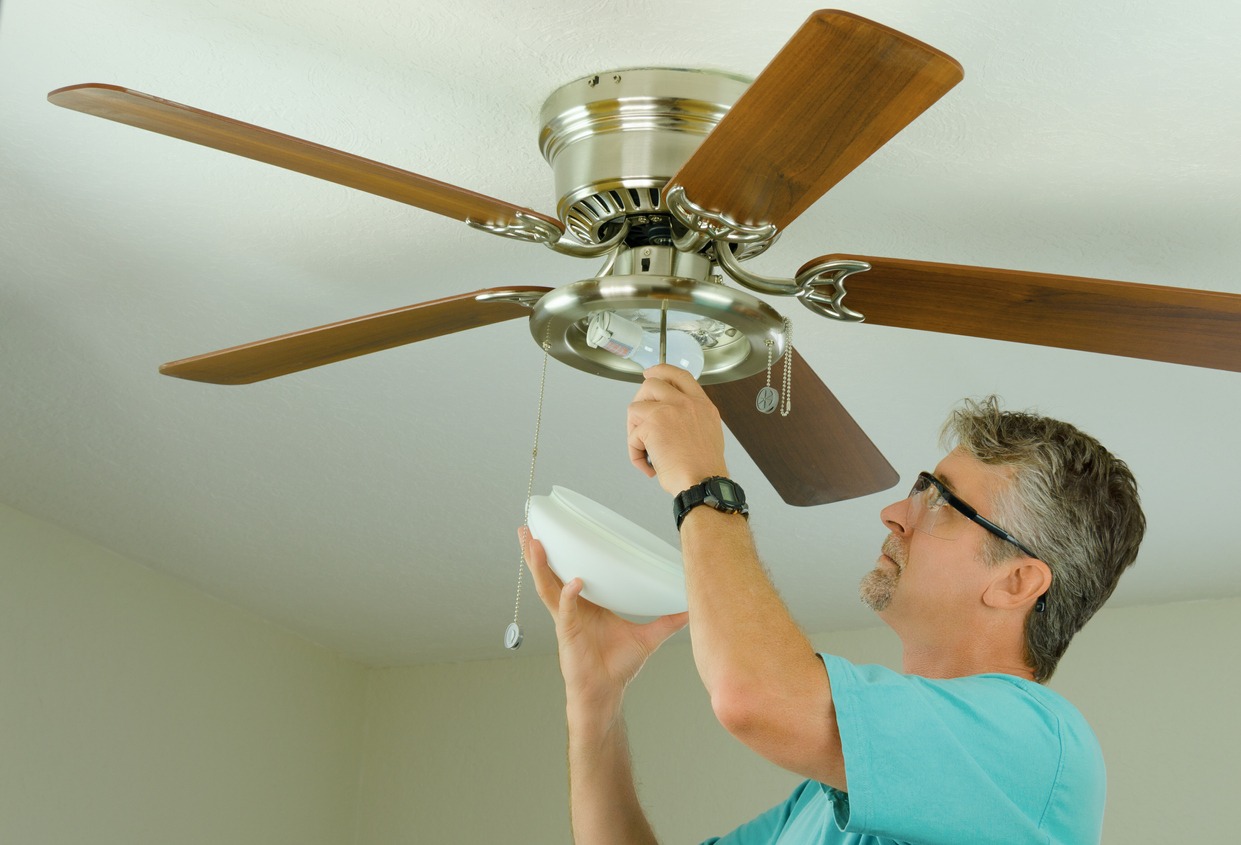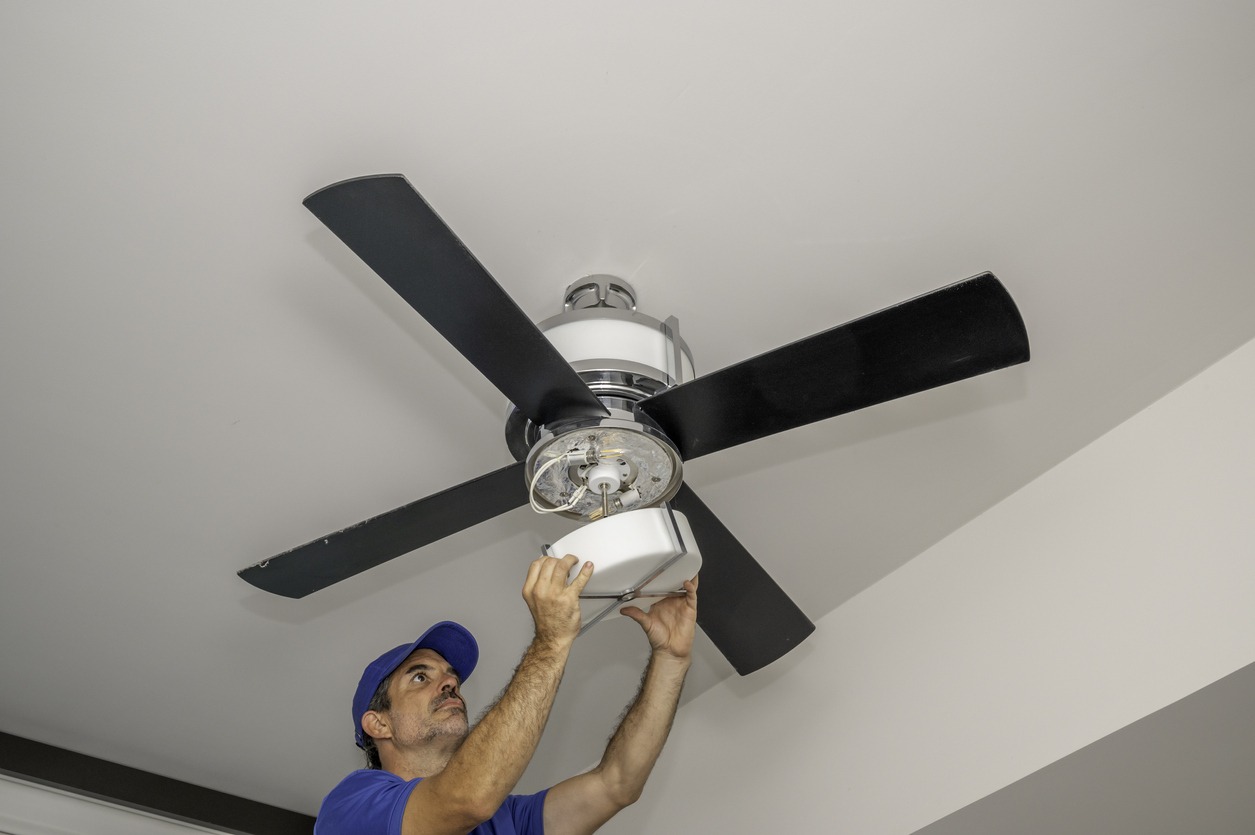Ceiling fans are used in a lot of homes as they are a great way to cool homes. Even though air conditioners can get the job done as well, they utilize a lot of energy and can cause significant increases in the cost of your energy bills. Also, in some cases, the air coming from an air conditioner may be just too cold. But with the use of a ceiling fan, you’ll be able to get a nice “in-between” temperature option that will not exhaust your electrical system or run up your utility bills.
However, ceiling fans can only provide their benefits if they are working properly. A poorly functioning one can be quite a headache to deal with. They can present dangers and even lead to expensive repairs when maintenance issues are improperly addressed. Just like other home appliances, ceiling fans also wear out as they age. Their motors can quit working, their wires can become loose or broken, and their blades can become worn. Aside from that, new ceiling fan models also come out yearly, which offer many energy-saving features that may help reduce your electric bill and make your home more environmentally friendly.
If you have a ceiling fan at home, do you know how you can tell when it is time to replace it? If you are also curious about this, you’re in the right place. In this article, we are going to provide you with more information about how long a ceiling fan lasts and the signs that tell it is time to replace it.
How Long Do Most Ceiling Fans Last?
The lifespan of ceiling fans may vary depending on the model and how much it is used. Most ceiling fans are estimated to last for a maximum of ten years. However, if you use your ceiling fan heavily to keep your home cool throughout the summer, you may expect to replace it before the decade is up, or at least have to do some maintenance or repair on the fan.
There are higher quality ceiling fans available in the market that may last from 15 years to 20 years before needing to be replaced. The quality of the ceiling fan affects its life expectancy. But aside from that, the quality of the installation job also plays a vital role. Therefore, if you are planning to get a ceiling fan soon, make sure that you choose a high-quality one and let it be installed by professionals to ensure that it will last as long as possible.
Signs You Need to Replace Your Ceiling Fan
If you are noticing that your ceiling fan is not working the same way as before, you may be wondering if it is time to replace it. Ceiling fans become less effective with age, and there are a lot of reasons why replacing them is a good investment. These may include energy savings, increased comfort, and increased home value. To further help you, below are some of the signs that it is time to replace your ceiling fan:
Your Ceiling Fan is Shaky or Looks Unstable
If you notice your ceiling fan is wobbling while it circulates air, it may be telling you that something is wrong. There are a few quick fixes that you can try when you notice any shaking or instability while the fan works.
For instance, you can dust off the blades. Sometimes, a buildup of dust can cause the blades of the ceiling fan to become imbalanced, resulting in a wobbling fan while working. Aside from that, you may also try to tighten the screws. There are times when a loose screw is the culprit of the uneven appearance of a ceiling fan. Therefore, try to check and tighten all the screws.
If these fixes do not work, your ceiling fan likely has a bigger issue which may indicate that it needs to be replaced. Its motor might be malfunctioning and causing it to shake and wobble. It is also possible that the fixture is nearing the end of its lifespan.
Your Ceiling Fan Works Slower Than Normal
If your ceiling fan at home used to cool down a room fast, and it just does not get the job done anymore, it could be a sign of the motor malfunctioning. The motors of most ceiling fans have a certain lifespan, and it is dependent on the quality of the fixture, installation, and other circumstances.
If you notice your ceiling fan slowing down, it will possibly continue to lose speed as the motor continues to die. Due to this, it is a good idea to replace the ceiling fan as soon as you notice a decrease in speed. Buying a high-quality ceiling fan and having it installed by professionals will ensure that it will keep its speed for many years to come.
There are Buzzing or Squeaking Sounds
If your ceiling fan is working well, it should spin without making a lot of noise. There are certain noises that are gentle and consistent, which are normal for a lot of ceiling fans. However, if you notice unusual, loud, or unpleasant noises, these could be signs of an issue. Any kind of loud squeaking noises, buzzing sounds, or thumbs and creaking are reasons for concern when it comes to ceiling fans. This could mean your ceiling fan is improperly wired, or poorly assembled, and it might need to be disassembled to determine if there is a more serious wiring issue or not.
The Ceiling Fan Won’t Turn On or Off
If the ceiling fan you have at home is no longer responding to its switch, then this is an obvious sign of some kind of electrical issue. The motor of the ceiling fan might be dead, or there could be a more severe internal wiring issue. If this is the case, it is a good idea to call a professional electrician who is experienced in ceiling fan repair services to know the cause of the issue and see if it needs to be repaired or replaced.
Recurring Issues Even After Repairs
If your ceiling fan keeps on experiencing issues even after many times of repairs, then it might be time to replace it. Maintenance and repairs can do a lot to increase the longevity of a ceiling fan. However, if it stops working, it means that it is ready to be replaced. Do not keep on wasting money on small fixes when you could save more in the long run by replacing the fan.
You are Looking for a More Energy-Efficient Ceiling Fan
Your ceiling fan might still be working, but it could be an old model that is using more energy than you would like. When your ceiling fan is not energy efficient, it may result in high energy bills. Ceiling fans that use a lot of energy are usually older and outdated. If this is the case, a replacement might be needed for a multitude of other reasons.
You Want to Change the Look of Your Home
Your desire to replace your ceiling fan could also be mainly based on aesthetic reasons. For example, your ceiling fan could be outdated, you may be redecorating, or you may simply want a change. A ceiling fan is a focal point of a room. Therefore, it is essential that it fits your decorating style. Even if your current ceiling fan is still working well, opting for a new design or model that will match the style of your home or room is a valid reason to replace the old one. If you want to add a ceiling fan to a 10×12 room in your home, you can read our guide on the Optimum Ceiling Fan for a 10×12 Room.
Conclusion
Ceiling fans are indeed functional and essential fixtures at home, and it is also important to upgrade them from time to time. Whether your current ceiling fan no longer works well, or its design is outdated and no longer matches the style of your home, replacing it can have a significant impact on your home. And if in case you are not sure if you should replace or just have it repaired, reaching out to experts is one of the best ways to get the best answer and recommendation. We hope this article helped you learn more about when it is time to replace a ceiling fan.


